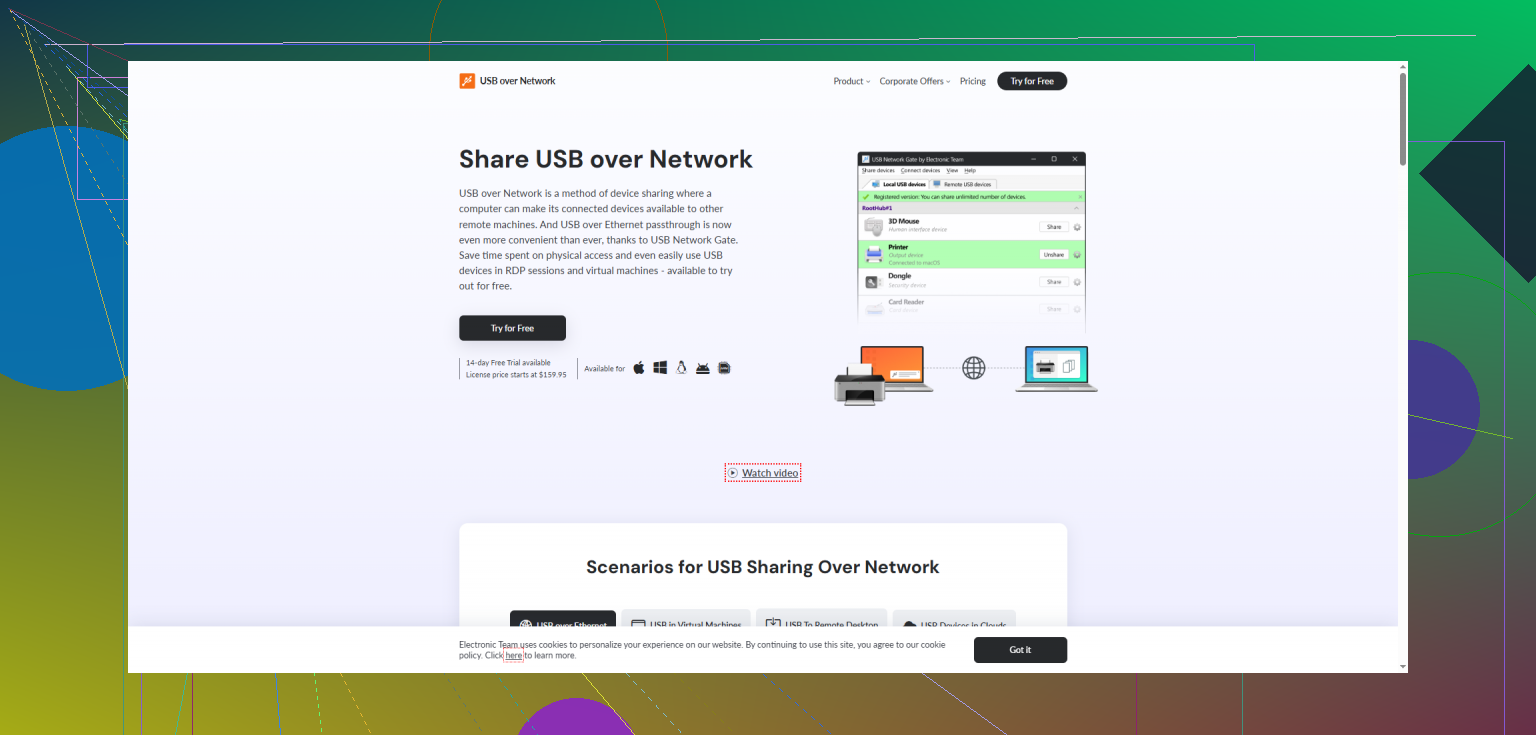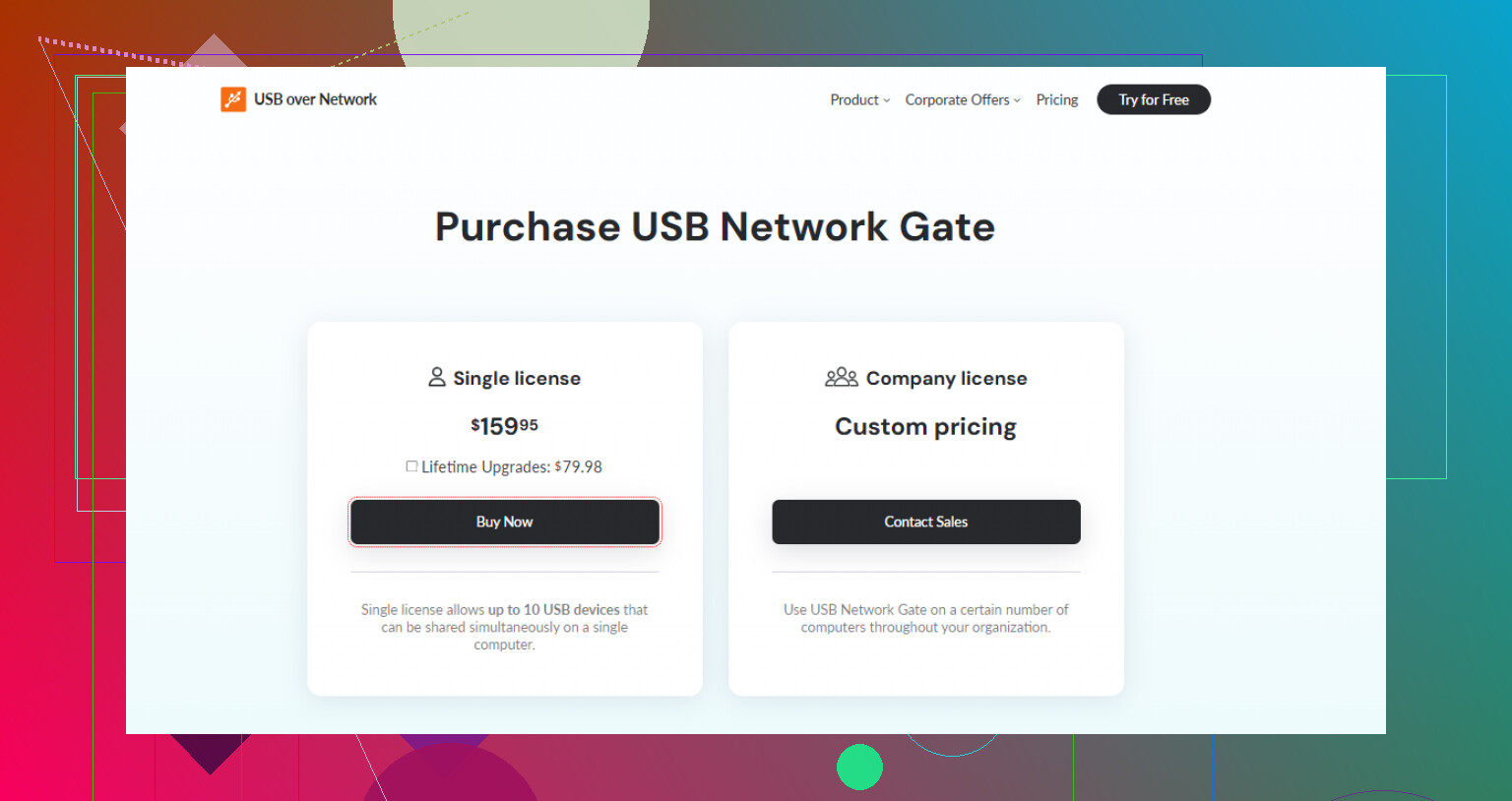I’m having issues with USB over Ethernet not being reliable for my devices, especially when trying to connect peripherals over a network. I’m looking for a stable solution that works better. Has anyone found a dependable USB over Ethernet alternative that consistently works? Any recommendations or things to watch out for would really help.
Forget Everything You Knew About USB Over Ethernet
Sometimes you think you’ve found The One—the perfect software to share a USB device over your network—and then reality kinda slaps you with a pop-up saying, “Your trial has ended.” Been there, felt that pain. So, I went looking for an alternative after another “just works” app left me in the lurch.
Here’s the thing: USB over Ethernet app didn’t make me throw my keyboard out the window, so that’s a win. It gets updates every now and then—not that monthly kinda churn that breaks more than it fixes, but just enough so you don’t feel abandoned. I hooked it up for my collection of odd gadgets: a 3D printer, a bunch of audio stuff, even handed my ridiculous 7-year-old barcode scanner over LAN. Works. No drama.
Would I Call It “The Best”? Eh, Maybe
Look, there are a billion so-called “best alternatives” but half of them either look like a Windows 98 screensaver or make you pay per device. USB Network Gate gives you up to 10 devices on a single license, and trust me, if you’re trying to do more than that, you’ve probably convinced your entire family to use your printer remotely for some reason. At that price, it’s fair. Could be cheaper, could come with free pizza, but who’s complaining?
Key Points at a Glance
- Updates? Yeah, about once a year, so it’s not shelfware.
- Compatibility isn’t bad—my stuff just worked, no extra drivers.
- 10-device sharing? More than most people need.
- Pricing is in the “not a scam” zone.
Final Gripe
You always wish software like this was as easy as plugging in a USB stick and having it show up everywhere. It’s not magic, but this comes close. USB over Ethernet isn’t some unicorn, but if anyone else has options that don’t cost an arm and a leg and actually work, hit me up. Otherwise, here’s the link. Good enough for now.
Honestly, the “USB over Ethernet alternative” topic is kinda like an endless quest for the Holy Grail. I get what @mikeappsreviewer is saying about USB Network Gate, it’s one of the few options that doesn’t feel like digital Russian roulette, but IMO, even the best software trickery doesn’t always replace the old-school, plug-and-play happiness we all dream about.
If stability is your #1 pain point (sounds like it is), you might wanna think about abandoning the concept of USB-over-any-kind-of-IP entirely. Sometimes, physical KVM-over-IP hardware or purpose-built network-attached devices just way outperform software hacks. For example, consider a network-enabled print server for printers, or even a Raspberry Pi with ser2net/usbip for serial or USB gadget sharing (assuming you can tolerate a few command line headaches). I know, the Pi route is not for everyone and has its own “fun” with updates—but it’s your hardware, so fewer random surprise paywalls or compatibility fails.
Honestly, the real alternative is—where possible—using native network devices. Printers, scanners, even some audio gear offer direct ethernet or WiFi these days. Blunt truth? If your peripheral-maker thought enough to slap an RJ45 on the back, roll with it. Reliability trumps “but it’s just USB!” nostalgia every time.
But if you absolutely gotta go the USB-over-Ethernet route (maybe you’re trying to control a stubborn laser engraver or something way too old school), USB Network Gate is prob the least rage-inducing of a mediocre bunch. Don’t expect miracles though. I’ve seen threads where even that throws tantrums with webcams and anything that needs constant low-latency comms.
Take a peek at guides like making USB devices work smoother across your network for more hands-on stuff if you’re feeling adventurous. Sometimes, the “stable solution” literally is to skip the USB abstraction circus and just wire things like it’s 1999.
Just my two cents. Anyone had success with actual plug-and-play, zero-config devices that weren’t some flavor of USB-over-IP? Or are we all just hoping the next Windows update doesn’t break things—again?
Honestly, the USB over Ethernet saga is like trying to fit a square peg in a round hole—possible, a bit ugly, and mostly for people who don’t want to buy new stuff. I mean, I get what @mikeappsreviewer and @cacadordeestrelas are saying: software like USB Network Gate is the “least bad” option out there, and yeah, the hardware alternatives (like print servers, KVM-over-IP switches, or that infamous Raspberry Pi hackery) can make you wanna tear your hair out if you’re not up for fiddling. They both make good points, but here’s the rub: even the best USB over Ethernet software will choke somewhere, especially with stuff that needs sub-millisecond responses. I tried wrangling a USB over IP solution for a webcam farm at work, and even with the fanciest software, it still dropped frames and locked up when the wind blew the wrong way.
What about just… ditching USB entirely? If you’re running printers, scanners or even storage, there’s a good chance that a network-native option (think: a printer with WiFi/Ethernet, a NAS, or a network audio interface) will do the job with 100x less frustration. It’s wild how much smoother things run when you cut out that USB-over-Ethernet abstraction circus. I know, I know—not everyone can just rebuy their gear. But if reliability is king, native network devices stomp everything else.
That said, if you’re stuck, I agree with the previous posters that using a reliable USB device sharing app is the closest to “it just works” you’ll get (for, like, 95% of cases). It’s not free, but it doesn’t feel like ransomware either, and it won’t eat your weekend to get up and running. Just… don’t expect it to play nice with crazy stuff like old gamepads or VR gear.
Bottom line: there’s no golden bullet. If you want zero-hassle, skip USB-over-anything and go with hardware that talks Ethernet out of the box. Still stuck with legacy? Then USB Network Gate is the least headache-prone of the bunch, but don’t toss the aspirin just yet.
Short answer? USB over Ethernet always feels like a workaround for a reason. The alternatives—like network-ready printers, audio devices, or NAS drives—are a dream if you can actually ditch your USB gear, but legacy devices often lock you in.
Honestly, after falling for a few too many sketchy tools or pricey device-per-license scams, I’ve settled on USB Network Gate too. It’s not perfect—latency-sensitive stuff like gamepads or external audio gear can still hiccup (let’s not pretend it rivals the real thing). Pros? Dead simple setup, decent multi-OS support, ten-device sharing is generous, and costs are sane for home or SMBs. Updates don’t break everything (rare win). Con: It’s not free, and troubleshooting mystery failures on niche hardware is no picnic. And if your use case involves chunky video or bulk data, don’t expect miracles.
Compared to what other folks mentioned—going deep with hardware print servers, KVMs, or Pi DIY projects—I’d say USB Network Gate is much friendlier and less hair-pulling for most people.
Summary: If your gear talks Ethernet natively, skip the convert-and-share mess! If not, USB Network Gate is the most reliable “least bad” option, especially vs. older competitors—just don’t bet your pro VR streaming or DAW sessions on it.

